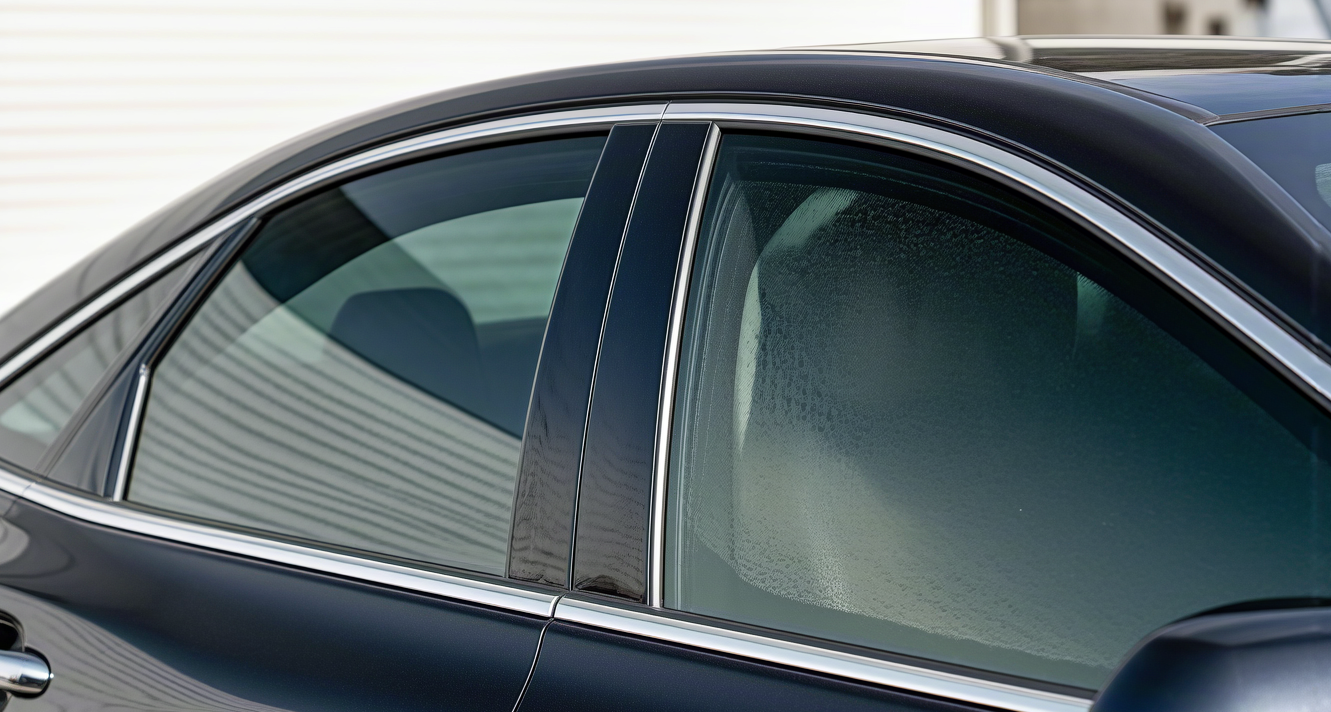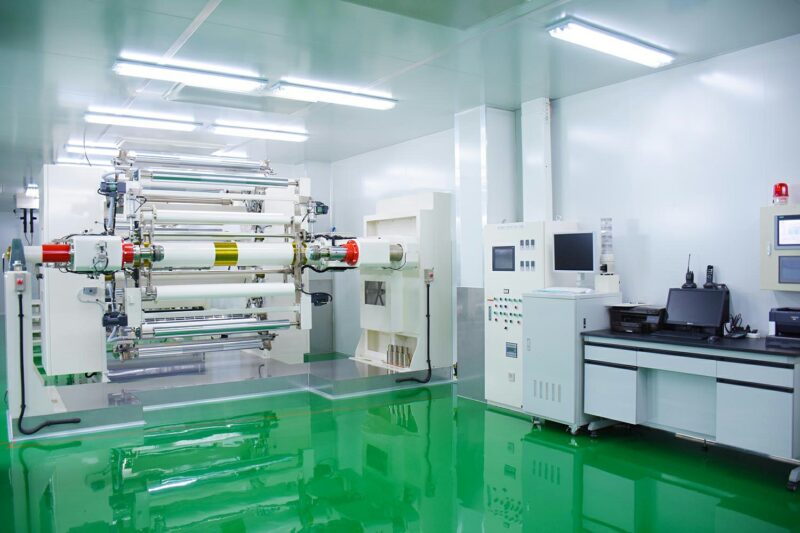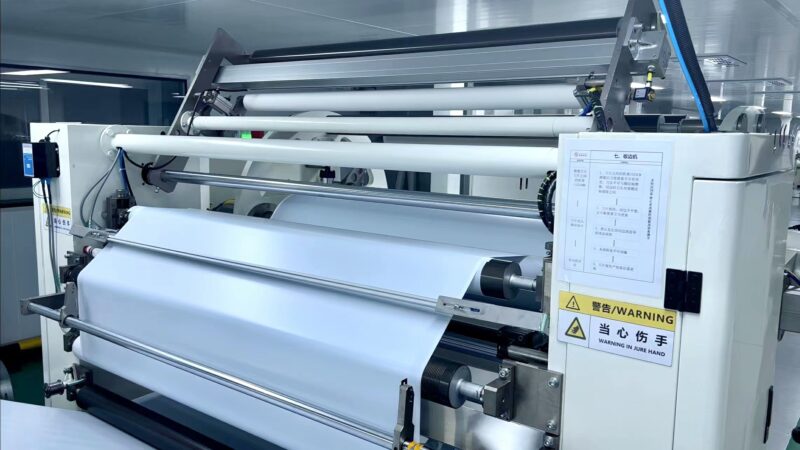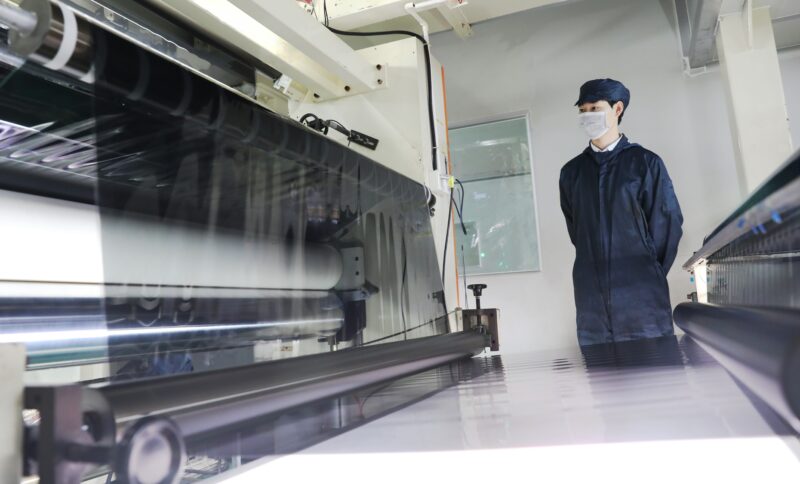

Recently, I had the privilege of touring KASHIBANG’s modern manufacturing facility, witnessing the entire process where a transparent substrate undergoes precise manufacturing to transform into a high-performance functional film. This two-story production workshop embodies the production philosophy of “Perfection Lives in Details” through rigorous quality control standards and advanced manufacturing technology.
Precision Protection in the Cleanroom
Stepping through the factory’s first threshold revealed the impressive “dual-safeguard” environmental control system. The production area features a fully enclosed, constant-temperature, and constant-humidity design. Temperature is meticulously maintained at 23°C ±1°C, with humidity strictly controlled between 40%-60%, providing a stable physical environment for film processing. The workshop spans two levels:
To eliminate electrostatic interference, personnel undergo a dual purification process: changing into specialized shoe covers and cleanroom suits, followed by dust removal via high-pressure air in the air shower chamber. Notably, carrying items like lighters, mobile phones, or any electronic device that might generate static electricity is strictly prohibited within the workshop – a testament to the brand’s relentless pursuit of product quality.

The Transformation Journey: From Substrate to Functional Film
1. Raw Material Pre-Treatment
The production sequence begins with unloading giant raw material rolls. Guided by a traction system, the transparent substrate passes through two critical stages:
2. Functional Layer Coating (Level 2 Workshop)
The cleaned substrate is transported vertically via a lift system to the Level 2 coating workshop. Here, precision coating heads uniformly apply functional materials (e.g., thermal insulation coatings, explosion-proof coatings) onto the substrate, forming layers imbued with specific performance characteristics. This step demands extreme coating precision, with thickness tolerance controlled at the micrometer level.
3. Lamination & Curing (Level 1 Workshop)
The substrate, now coated with the functional layer, returns to Level 1 for preliminary lamination with a release film. This composite film, not yet fully bonded, is then conveyed via the traction system back to Level 2 for adhesive application. The doubly coated film then descends to Level 1 again, undergoing sequential processes including cooling/laminating and adhesive reinforcement. The material is finally wound onto an accumulator for initial take-up.
4. Rigorous QC: From Lab to Shipment
Coiled film isn’t shipped immediately; it enters a comprehensive inspection phase. Quality control teams conduct random sampling for multiple tests:
Only film passing all tests proceeds to the finished goods warehouse for slitting, logo printing, and packaging. Finally, rolls bearing the KASHIBANG logo are shipped worldwide, serving premium clients like BMW and China Aerospace, alongside countless consumers.

Craftsmanship Defines Quality, Technology Powers the Future
This visit deeply conveyed KASHIBANG factory’s dedication to “precision manufacturing”: from meticulous cleanroom environment control and the optimized dual-level workflow, to micrometer-scale coating accuracy and a lifecycle-encompassing QC system. Every step embodies a profound respect for quality. It’s precisely this deep integration of traditional craftsmanship with modern technology that keeps KASHIBANG functional films at the forefront in sectors like automotive window film, architectural energy efficiency, and aerospace applications. KASHIBANG stands as yet another exemplar propelling “Made in China” onto the global stage.

No.6, Dongjiang Road, Eastward, Zhongtang Town, Dongguan, Guangdong



© Copyright 2022-KSB